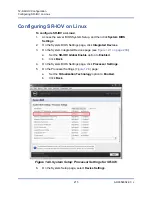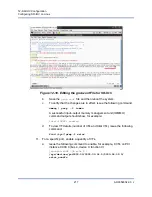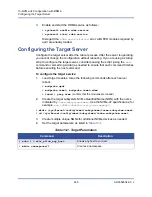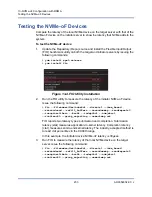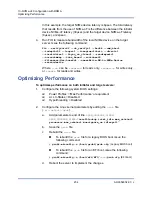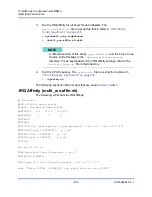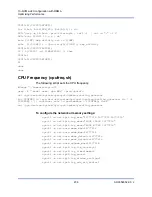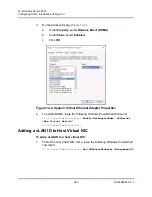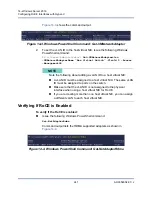
226
AH0054602-00 J
13
NVMe-oF Configuration
with RDMA
Non-Volatile Memory Express over Fabrics (NVMe-oF) enables the use of
alternate transports to PCIe to extend the distance over which an NVMe host
device and an NVMe storage drive or subsystem can connect. NVMe-oF defines
a common architecture that supports a range of storage networking fabrics for the
NVMe block storage protocol over a storage networking fabric. This architecture
includes enabling a front-side interface into storage systems, scaling out to large
quantities of NVMe devices, and extending the distance within a data center over
which NVMe devices and NVMe subsystems can be accessed.
The NVMe-oF configuration procedures and options described in this chapter
apply to Ethernet-based RDMA protocols, including RoCE and iWARP. The
development of NVMe-oF with RDMA is defined by a technical sub-group of the
NVMe organization.
This chapter demonstrates how to configure NVMe-oF for a simple network. The
example network comprises the following:
Two servers: an initiator and a target. The target server is equipped with a
PCIe SSD drive.
Operating system: RHEL 7.5, RHEL 7.6, SLES 12 SP 3, SLES 12 SP 4, and
SLES 15.
Two adapters: One 41
xxx
Series Adapter installed in each server. Each port
can be independently configured to use RoCE, RoCEv2, or iWARP as the
RDMA protocol over which NVMe-oF runs.
For RoCE and RoCEv2, an optional switch configured for data center
bridging (DCB), relevant quality of service (QoS) policy, and vLANs to carry
the NVMe-oF’s RoCE/RoCEv2 DCB traffic class priority. The switch is not
needed when NVMe-oF is using iWARP.




